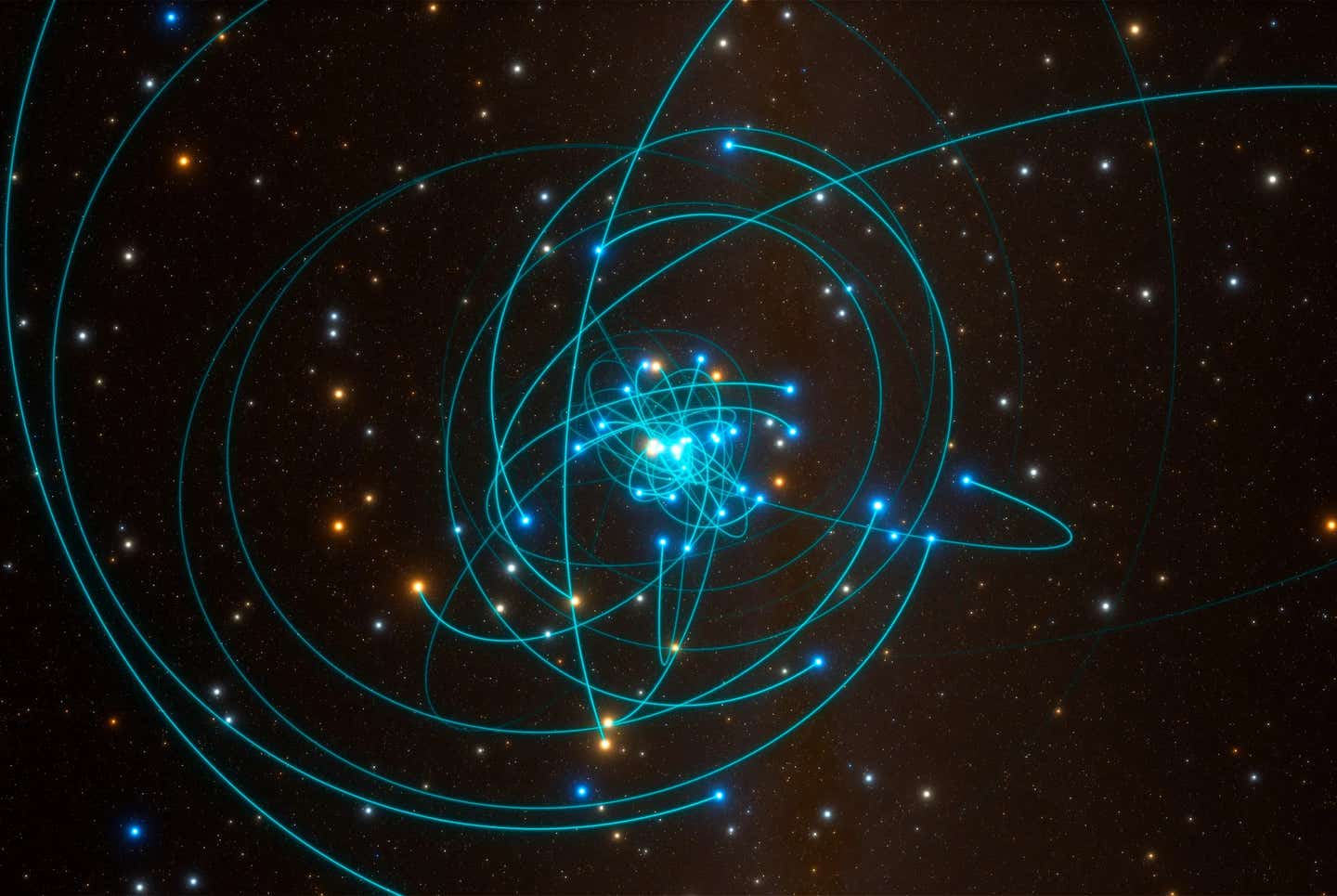New research findings challenge Einstein’s landmark theory of relativity
The discovery in 1998 that the Universe’s expansion is speeding up has become one of the deepest and most enduring puzzles in modern physics.

While the ΛCDM model has been a cornerstone of cosmology, it is showing its limitations as researchers seek to explain observations beyond its scope. (CREDIT: ESO/L. Calçada/spaceengine.org)
The discovery in 1998 that the Universe is expanding faster over time shook the foundations of cosmology. This finding challenged deep-seated assumptions about how space behaves on the grandest scales.
To explain this cosmic acceleration, scientists have developed a variety of ideas. Some turn to the cosmological constant—a constant energy density filling all of space. Others explore dark energy as something more dynamic. Still, others question whether Einstein’s theory of general relativity needs a rewrite. Testing these ideas requires vast sky surveys that chart the positions of galaxies and the structure of matter.
New Insights into Cosmic Expansion
The standard ΛCDM model has long guided our understanding of the Universe. But its limits are becoming more apparent as new data rolls in. Researchers are now exploring paths beyond ΛCDM to better match observations.
One approach involves broad theoretical models like Horndeski theories. These incorporate scalar-tensor interactions and second-order equations. Their strength lies in connecting what we see in space to deep physical laws. Yet, their complexity comes with a cost. The models produce overlapping effects—called degeneracies—that make it hard to pinpoint exact causes from the data alone.
A second method takes a more practical route. It tweaks Einstein’s equations using two key parameters: μ (mu) and η (eta). These describe how gravity might deviate from predictions and how space and time may stretch differently.
The μ parameter adjusts Poisson’s equation, which governs how mass creates gravitational fields. It affects how strongly gravity pulls at large scales.
The η parameter measures how space and time distort differently. This helps scientists explore whether gravity behaves differently across cosmic distances. Together, μ and η offer a flexible way to test how gravity operates.
Related Stories
These parameters play a central role in interpreting data from major projects. For instance, gravitational lensing results from the Dark Energy Survey (DES) depend on them. So do galaxy clustering maps from surveys like BOSS and eBOSS. These tools let scientists probe the unseen forces shaping the cosmos.
Despite their promise, these methods bring hurdles. The values of μ and η are tied to redshift, or how far back in time we’re looking. This demands either fixed models of how they evolve or complex reconstructions. On top of that, the models assume Euler’s equation holds for dark matter—an assumption that may not always fit. These issues introduce new layers of complexity in understanding the data.
Redefining the Limits of Einstein’s Theory
Einstein’s general relativity revolutionized our understanding of gravity, depicting the Universe as a flexible fabric deformed by massive objects. This theory, confirmed by the 1919 solar eclipse, predicted the deflection of light by gravity, a phenomenon known as gravitational lensing. By studying how light bends around celestial bodies, scientists gain critical insights into the Universe's structure and expansion.
But are Einstein’s equations valid on the largest cosmic scales? Researchers from the University of Geneva (UNIGE) and Toulouse III – Paul Sabatier have sought to answer this question. Using DES data, they analyzed the distortion of time and space, comparing their findings to Einstein’s predictions.
Camille Bonvin, an associate professor at UNIGE, highlights the novelty of this approach: "Until now, Dark Energy Survey data have been used to measure the distribution of matter in the Universe. In our study, we used this data to directly measure the distortion of time and space, enabling us to compare our findings with Einstein’s predictions."
A Universe Slightly Out of Sync
The DES provided data on 100 million galaxies across four time periods: 3.5, 5, 6, and 7 billion years ago. These measurements revealed how gravitational wells—regions where gravity deforms space-time—evolved.
According to Isaac Tutusaus, lead author of the study, "We discovered that in the distant past — 6 and 7 billion years ago — the depth of the wells aligns well with Einstein’s predictions. However, closer to today, 3.5 and 5 billion years ago, they are slightly shallower than predicted by Einstein."
This discrepancy coincides with the period when the Universe’s expansion began accelerating. The data hint at a possible link between the two phenomena, suggesting that gravity might operate differently on cosmic scales. Tutusaus notes, "The slower growth of gravitational wells and the accelerating expansion might share the same underlying cause."
The 3-Sigma Challenge
The study found a 3-sigma level of incompatibility between Einstein’s predictions and the observed data. While this is significant, it falls short of the 5-sigma threshold needed to definitively challenge the theory. Nastassia Grimm, a co-author and postdoctoral researcher at UNIGE, explains, "Such an incompatibility threshold arouses our interest and calls for further investigations. But this incompatibility is not large enough, at this stage, to invalidate Einstein’s theory."
Further research is necessary to confirm these findings. The team is turning to the Euclid space telescope, launched last year, which promises more precise gravitational lensing data. Over its six-year mission, Euclid will observe 1.5 billion galaxies, offering unprecedented insights into the Universe's history and allowing scientists to test Einstein’s equations more rigorously.
As cosmologists delve deeper into the mysteries of the Universe, the boundaries of established theories are being pushed. The work of the UNIGE and Toulouse teams represents a critical step in this journey.
With upcoming data from Euclid, the scientific community is poised to refine its understanding of gravity and cosmic expansion. These efforts may ultimately reshape our perception of the Universe, bringing us closer to solving one of science’s greatest enigmas.
Note: Materials provided above by The Brighter Side of News. Content may be edited for style and length.
Like these kind of feel good stories? Get The Brighter Side of News' newsletter.



